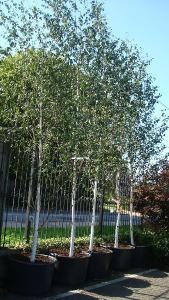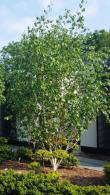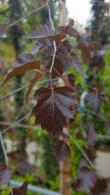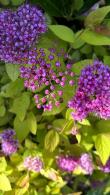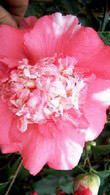Betula Utilis Jacquemontii Birch - Single Stem
Silver Birch Trees
1. Add items to basket
2. Go to the basket
3. Enter your postcode in Delivery Price Check
Plant shape: Feathered
Plant variety: Freshly Potted
Trunk girth: 6-8 cm
Pot size: 50 Litres
Plant ID: 591 WC 42
View plant size:Plant shape: Feathered
Trunk girth: 8-10 cm
Pot size: 45 Litres
Plant ID: 7358 64
View plant size:Plant shape: Full standard
Trunk girth: 12-14 cm
Pot size: 35 Litres
Plant ID: 14768 100
View plant size:Trunk height: 1.8-2 m
Trunk girth: 16-18 cm
Rootball - supplied without a pot
Plant ID: 12458 100
View plant size:To check delivery cost add your plants to basket, then you can type your postcode in our Quick Delivery Price Check.

Betulis Jacquemontii or the Himalayan Birch or to give it its full botanical name Betula Utilis Jacquemontii is also called the White Stem Birch and Jacquemonts Birch after the French naturalist. The Himalayan Birch is a tall upright fast growing tree that can be grown in moist soils. While it is similar (and related) to the Silver Birch Betula Pendula, the Himalayan Birch tree can be considered more dramatic as it has an even whiter bark or trunk. An outstanding birch that well deserves a place in the garden. Despite its variety of names, it is generally referred to as Betula Jacquemontii.
Betula Jacquemontii is a deciduous tree and is one of the most popular trees for sale at Paramount Plants. Originating from the Himalayas, its unusual bright white bark provides interest in the winter landscape. Betula Jacquemontii has dark green leaves which turn to ochre yellow in the autumn and each Spring the white birch tree produces attractive yellow brown catkins. This tree provides valued all year interest. The branches fork out from the stunning white trunk fairly low down, then growing sharply upwards to naturally form a broad crown that reaches 15 metres.
Betula Jacquemontii is relatively fast growing and can grow in either full sun or partial which provides year round interest. It produces catkins in spring, has green foliage in summer which turns a luscious gold in the autumn. Particularly striking is its white bark that looks almost magical in winter.
These Betula Jacquemontii birch trees can also work well in smaller or even urban gardens as while they grow tall, Betula Jacquemontii does keep its slim & slender shape. In the wild, birch trees like plenty of light (as opposed to deep forest), thrive in their own company and tend to look very good in groups. Perhaps this is why we often see birch trees growing in clusters. Betula Utilis Jacquemontii, which are often are often used as wind breaks, are frequently planted in clusters of at least three. Planting distances are flexible – 3 trees planted close together (1 to 2 metres apart) can create a mini-copse effect. Alternatively, consider a multi-stemmed option. We also have the Himalyan Birch available as a multi-stem trees. See Betula Jacquemontii Multi Stem.
Award of Garden Merit by the Royal Horticultural Society, a sure sign that it will perform well in most gardens.
More varieties of Birch: There are many more types of birch to choose from. Take a closer look at some of the most popular and find out which is the right one for you – the Silver Birch, Weeping Silver Birch, Snow Queen Himalayan Birch, Betula Nigra River Birch, Betula Pendula Crispa Swedish Birch, Betula Albosinensis Fascination Chinese Red Birch, Betula Pendula Purpurea Purple Birch or the Betula Papyrifera Paper Birch.




